Abigail Morrison
Efficient Epistemic Uncertainty Estimation in Cerebrovascular Segmentation
Mar 28, 2025Abstract:Brain vessel segmentation of MR scans is a critical step in the diagnosis of cerebrovascular diseases. Due to the fine vessel structure, manual vessel segmentation is time consuming. Therefore, automatic deep learning (DL) based segmentation techniques are intensively investigated. As conventional DL models yield a high complexity and lack an indication of decision reliability, they are often considered as not trustworthy. This work aims to increase trust in DL based models by incorporating epistemic uncertainty quantification into cerebrovascular segmentation models for the first time. By implementing an efficient ensemble model combining the advantages of Bayesian Approximation and Deep Ensembles, we aim to overcome the high computational costs of conventional probabilistic networks. Areas of high model uncertainty and erroneous predictions are aligned which demonstrates the effectiveness and reliability of the approach. We perform extensive experiments applying the ensemble model on out-of-distribution (OOD) data. We demonstrate that for OOD-images, the estimated uncertainty increases. Additionally, omitting highly uncertain areas improves the segmentation quality, both for in- and out-of-distribution data. The ensemble model explains its limitations in a reliable manner and can maintain trustworthiness also for OOD data and could be considered in clinical applications
1LoRA: Summation Compression for Very Low-Rank Adaptation
Mar 11, 2025Abstract:Parameter-Efficient Fine-Tuning (PEFT) methods have transformed the approach to fine-tuning large models for downstream tasks by enabling the adjustment of significantly fewer parameters than those in the original model matrices. In this work, we study the "very low rank regime", where we fine-tune the lowest amount of parameters per linear layer for each considered PEFT method. We propose 1LoRA (Summation Low-Rank Adaptation), a compute, parameter and memory efficient fine-tuning method which uses the feature sum as fixed compression and a single trainable vector as decompression. Differently from state-of-the-art PEFT methods like LoRA, VeRA, and the recent MoRA, 1LoRA uses fewer parameters per layer, reducing the memory footprint and the computational cost. We extensively evaluate our method against state-of-the-art PEFT methods on multiple fine-tuning tasks, and show that our method not only outperforms them, but is also more parameter, memory and computationally efficient. Moreover, thanks to its memory efficiency, 1LoRA allows to fine-tune more evenly across layers, instead of focusing on specific ones (e.g. attention layers), improving performance further.
Empirical Comparison between Cross-Validation and Mutation-Validation in Model Selection
Nov 23, 2023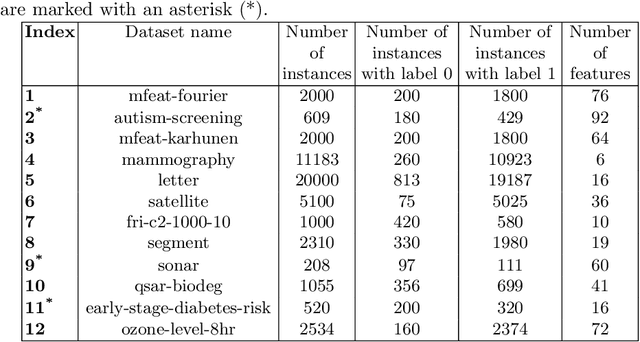
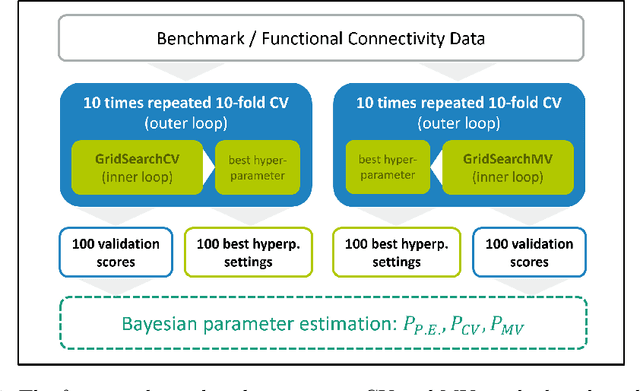
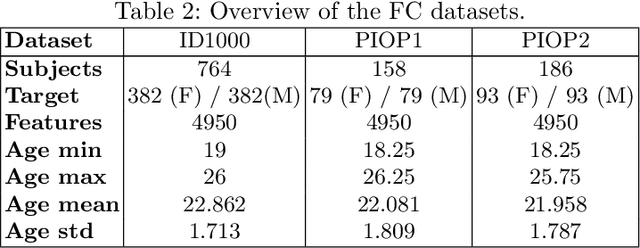
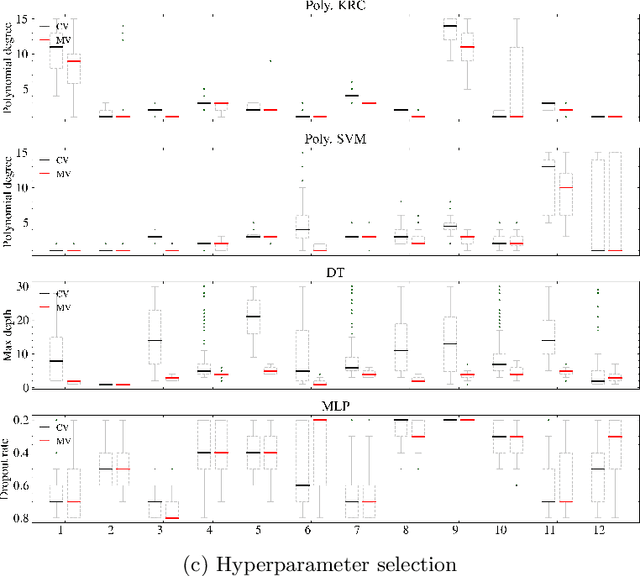
Abstract:Mutation validation (MV) is a recently proposed approach for model selection, garnering significant interest due to its unique characteristics and potential benefits compared to the widely used cross-validation (CV) method. In this study, we empirically compared MV and $k$-fold CV using benchmark and real-world datasets. By employing Bayesian tests, we compared generalization estimates yielding three posterior probabilities: practical equivalence, CV superiority, and MV superiority. We also evaluated the differences in the capacity of the selected models and computational efficiency. We found that both MV and CV select models with practically equivalent generalization performance across various machine learning algorithms and the majority of benchmark datasets. MV exhibited advantages in terms of selecting simpler models and lower computational costs. However, in some cases MV selected overly simplistic models leading to underfitting and showed instability in hyperparameter selection. These limitations of MV became more evident in the evaluation of a real-world neuroscientific task of predicting sex at birth using brain functional connectivity.
Runtime Construction of Large-Scale Spiking Neuronal Network Models on GPU Devices
Jun 16, 2023Abstract:Simulation speed matters for neuroscientific research: this includes not only how quickly the simulated model time of a large-scale spiking neuronal network progresses, but also how long it takes to instantiate the network model in computer memory. On the hardware side, acceleration via highly parallel GPUs is being increasingly utilized. On the software side, code generation approaches ensure highly optimized code, at the expense of repeated code regeneration and recompilation after modifications to the network model. Aiming for a greater flexibility with respect to iterative model changes, here we propose a new method for creating network connections interactively, dynamically, and directly in GPU memory through a set of commonly used high-level connection rules. We validate the simulation performance with both consumer and data center GPUs on two neuroscientifically relevant models: a cortical microcircuit of about 77,000 leaky-integrate-and-fire neuron models and 300 million static synapses, and a two-population network recurrently connected using a variety of connection rules. With our proposed ad hoc network instantiation, both network construction and simulation times are comparable or shorter than those obtained with other state-of-the-art simulation technologies, while still meeting the flexibility demands of explorative network modeling.
Emergent communication enhances foraging behaviour in evolved swarms controlled by Spiking Neural Networks
Dec 16, 2022Abstract:Social insects such as ants communicate via pheromones which allows them to coordinate their activity and solve complex tasks as a swarm, e.g. foraging for food. This behaviour was shaped through evolutionary processes. In computational models, self-coordination in swarms has been implemented using probabilistic or action rules to shape the decision of each agent and the collective behaviour. However, manual tuned decision rules may limit the behaviour of the swarm. In this work we investigate the emergence of self-coordination and communication in evolved swarms without defining any rule. We evolve a swarm of agents representing an ant colony. We use a genetic algorithm to optimize a spiking neural network (SNN) which serves as an artificial brain to control the behaviour of each agent. The goal of the colony is to find optimal ways to forage for food in the shortest amount of time. In the evolutionary phase, the ants are able to learn to collaborate by depositing pheromone near food piles and near the nest to guide its cohorts. The pheromone usage is not encoded into the network; instead, this behaviour is established through the optimization procedure. We observe that pheromone-based communication enables the ants to perform better in comparison to colonies where communication did not emerge. We assess the foraging performance by comparing the SNN based model to a rule based system. Our results show that the SNN based model can complete the foraging task more efficiently in a shorter time. Our approach illustrates that even in the absence of pre-defined rules, self coordination via pheromone emerges as a result of the network optimization. This work serves as a proof of concept for the possibility of creating complex applications utilizing SNNs as underlying architectures for multi-agent interactions where communication and self-coordination is desired.
Phenomenological modeling of diverse and heterogeneous synaptic dynamics at natural density
Dec 10, 2022Abstract:This chapter sheds light on the synaptic organization of the brain from the perspective of computational neuroscience. It provides an introductory overview on how to account for empirical data in mathematical models, implement them in software, and perform simulations reflecting experiments. This path is demonstrated with respect to four key aspects of synaptic signaling: the connectivity of brain networks, synaptic transmission, synaptic plasticity, and the heterogeneity across synapses. Each step and aspect of the modeling and simulation workflow comes with its own challenges and pitfalls, which are highlighted and addressed in detail.
Exploring hyper-parameter spaces of neuroscience models on high performance computers with Learning to Learn
Feb 28, 2022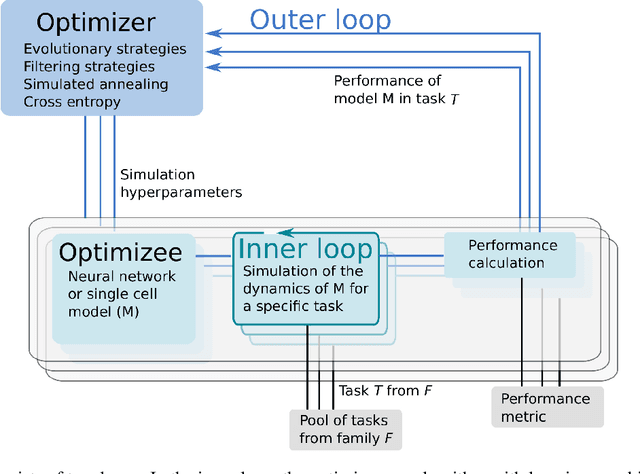

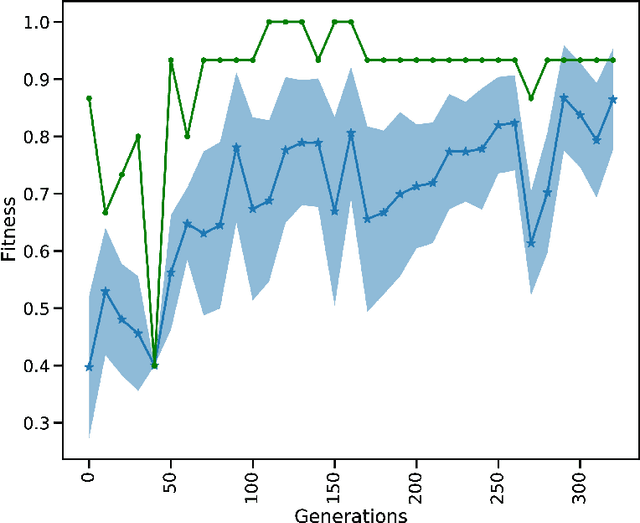
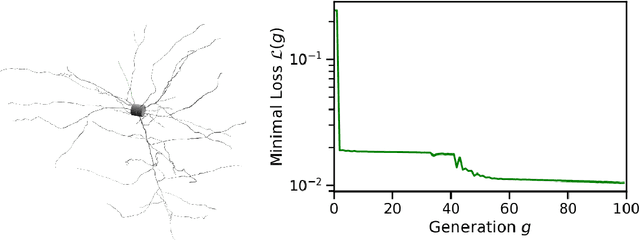
Abstract:Neuroscience models commonly have a high number of degrees of freedom and only specific regions within the parameter space are able to produce dynamics of interest. This makes the development of tools and strategies to efficiently find these regions of high importance to advance brain research. Exploring the high dimensional parameter space using numerical simulations has been a frequently used technique in the last years in many areas of computational neuroscience. High performance computing (HPC) can provide today a powerful infrastructure to speed up explorations and increase our general understanding of the model's behavior in reasonable times.
Closed loop interactions between spiking neural network and robotic simulators based on MUSIC and ROS
Apr 16, 2016
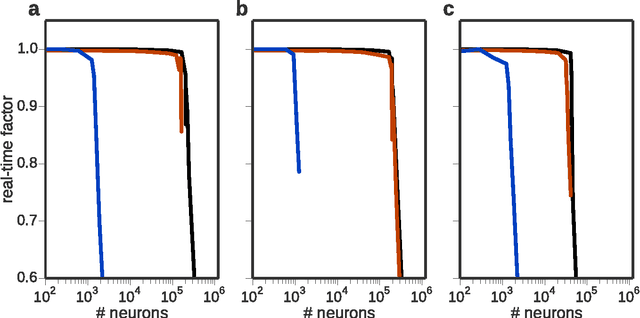
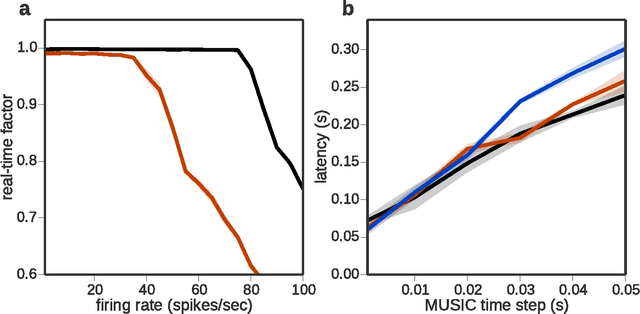
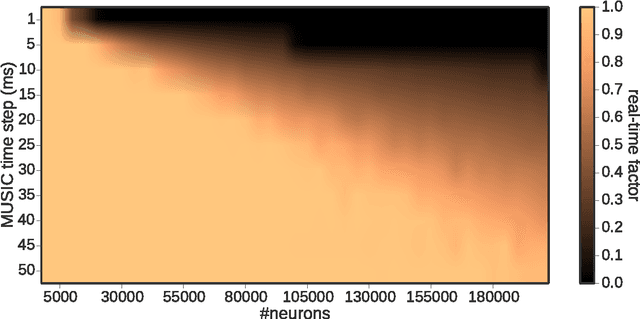
Abstract:In order to properly assess the function and computational properties of simulated neural systems, it is necessary to account for the nature of the stimuli that drive the system. However, providing stimuli that are rich and yet both reproducible and amenable to experimental manipulations is technically challenging, and even more so if a closed-loop scenario is required. In this work, we present a novel approach to solve this problem, connecting robotics and neural network simulators. We implement a middleware solution that bridges the Robotic Operating System (ROS) to the Multi-Simulator Coordinator (MUSIC). This enables any robotic and neural simulators that implement the corresponding interfaces to be efficiently coupled, allowing real-time performance for a wide range of configurations. This work extends the toolset available for researchers in both neurorobotics and computational neuroscience, and creates the opportunity to perform closed-loop experiments of arbitrary complexity to address questions in multiple areas, including embodiment, agency, and reinforcement learning.
Reconstruction of recurrent synaptic connectivity of thousands of neurons from simulated spiking activity
Jun 07, 2015



Abstract:Dynamics and function of neuronal networks are determined by their synaptic connectivity. Current experimental methods to analyze synaptic network structure on the cellular level, however, cover only small fractions of functional neuronal circuits, typically without a simultaneous record of neuronal spiking activity. Here we present a method for the reconstruction of large recurrent neuronal networks from thousands of parallel spike train recordings. We employ maximum likelihood estimation of a generalized linear model of the spiking activity in continuous time. For this model the point process likelihood is concave, such that a global optimum of the parameters can be obtained by gradient ascent. Previous methods, including those of the same class, did not allow recurrent networks of that order of magnitude to be reconstructed due to prohibitive computational cost and numerical instabilities. We describe a minimal model that is optimized for large networks and an efficient scheme for its parallelized numerical optimization on generic computing clusters. For a simulated balanced random network of 1000 neurons, synaptic connectivity is recovered with a misclassification error rate of less than 1% under ideal conditions. We show that the error rate remains low in a series of example cases under progressively less ideal conditions. Finally, we successfully reconstruct the connectivity of a hidden synfire chain that is embedded in a random network, which requires clustering of the network connectivity to reveal the synfire groups. Our results demonstrate how synaptic connectivity could potentially be inferred from large-scale parallel spike train recordings.
* This is the final version of the manuscript from the publisher which supersedes our original pre-print version. The spike data used in this paper and the code that implements our connectivity reconstruction method are publicly available for download at http://dx.doi.org/10.5281/zenodo.17662 and http://dx.doi.org/10.5281/zenodo.17663 respectively
 Add to Chrome
Add to Chrome Add to Firefox
Add to Firefox Add to Edge
Add to Edge